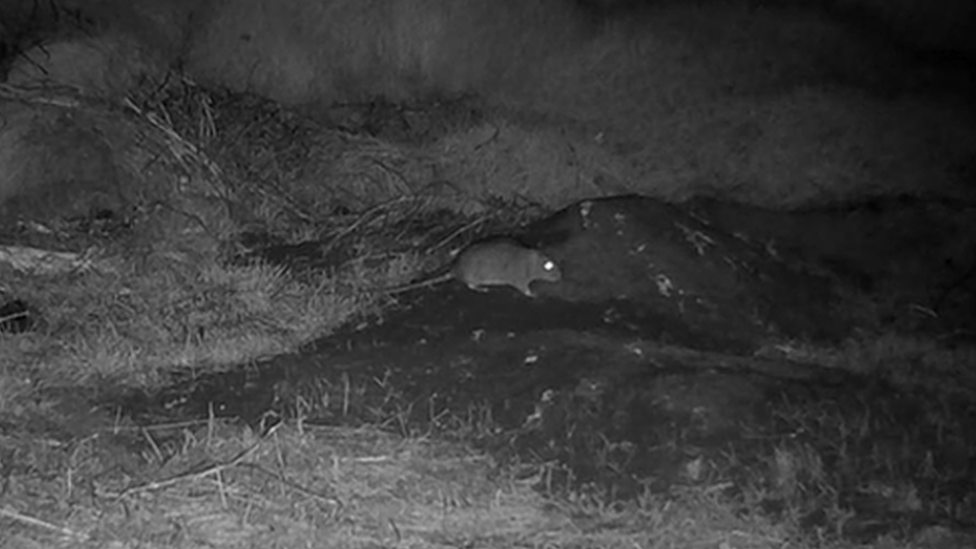Rat removed from Lamb Island owned by 'psychic' Uri Geller
- Published

The rat was discovered on motion-triggered cameras
A single rat has been removed from a Scottish island owned by "psychic" Uri Geller which has now been declared free from invasive predators.
Volunteers spent two years finding the "elusive rat" on Lamb Island off the East Lothian coast near North Berwick.
The rodents can be a threat to breeding seabird populations by targeting their eggs and young.
"I was astounded when I saw the infrared image of the rat," Geller told BBC Scotland.
"My island is not that tiny so to locate one rat is a big achievement. I'm very pleased."
Lamb Island is home to seabirds such as puffins, kittiwakes, cormorants and guillemots.

Lamb Island sits just off North Berwick
Volunteers from the Lothian Sea Kayak Club and the Lothian Seabird Centre made 35 trips out to the island, which is difficult to access using larger boats.
The team used motion-triggered cameras and concluded there was likely only one rat present.
Sarah Lawrence, of the Biosecurity for LIFE project, praised the work of the volunteers.
She said: "The volunteers have spent two winters navigating harsh weather, Covid restrictions, and the frustrations of seeking a very elusive rat - and thanks to their hard work we are confident that the Lamb's puffins and other seabirds will return to nest on a rat-free island this year."
Emily Burton, conservation officer at the Scottish Seabird Centre, said: "It is a huge relief to know that the Lamb is free of invasive predators."

Uri Geller describes the island as mysterious and enigmatic
Israeli illusionist Geller, 75, became the owner of Lamb Island in 2008.
It is a rocky outcrop which some people have suggested has links to the pyramids in Egypt.
The Lamb is included in a 15th Century manuscript called the Scotichronichon - by the Abbot of Inchcolm, Walter Bower - who claimed that the Scottish people were descendants of the ancient Egyptians.
He claimed their ancestry could be traced back to Tutankhamen's half-sister Scota, or Scotia - who, legend has it, visited the Lamb, and may have even buried treasure there.

Lamb Island is home to seabirds such as puffins (pictured), kittiwakes, cormorants and guillemots
Geller told BBC Radio Scotland Drivetime: "Very few people know that Lamb is a mysterious and enigmatic island. And it's claimed to be one of the great pyramids of Scotland. No-one knows that in Scotland.
"It's really one of three rocky outcrops which mirror the layout of the pyramids in Giza in Cairo. I was always fascinated by the connection between the pyramids and these Islands."